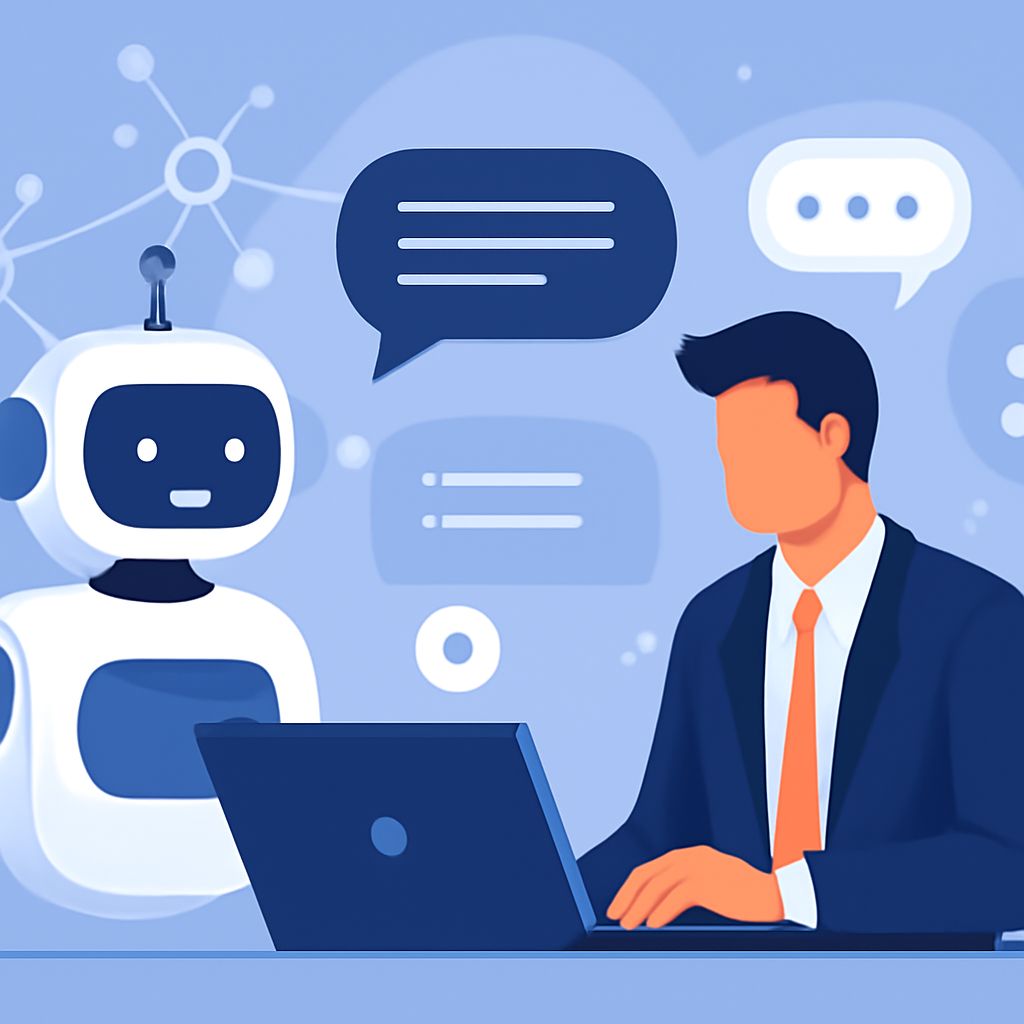Introduction
In the digital age, customer service has undergone a significant transformation. As technological advancements continue to reshape how we interact with businesses, companies are increasingly turning to artificial intelligence to streamline their customer care processes. At the forefront of this revolution are chatbots, powerful tools that promise not only efficiency but also an enhanced user experience.
The integration of AI in customer service is not just about doing more with less, but about improving the quality of service overall. By automating routine inquiries, chatbots free up human agents to tackle more complex issues, thereby improving overall efficiency and allowing companies to focus on strategic customer interaction.
The Evolution of Customer Service
The landscape of customer service has evolved from traditional call centers to multi-channel platforms designed to meet customers where they are. This evolution has been driven by changing consumer expectations and technological progress. Today’s customers expect quick, efficient, and accurate responses, and they want to engage with brands on their terms, whether that’s via text, chat, or even social media.
AI-powered chatbots are a response to this shift, offering instant service and reducing the need for customer hold times. They represent a significant leap forward in the quest for cost-effective, scalable, and reliable customer service solutions.
Benefits of Chatbot Automation
Implementing AI-powered chatbots in customer service comes with numerous advantages:
- 24/7 Availability: Chatbots can provide round-the-clock assistance, ensuring that customer queries are addressed promptly at any time of day, thus improving customer satisfaction and loyalty.
- Cost Efficiency: By handling a large volume of requests, chatbots significantly reduce the need for expansive customer service teams, resulting in substantial cost savings for businesses.
- Consistency in Responses: Chatbots deliver consistent answers, minimizing the risk of human error and ensuring uniform service quality, thereby maintaining brand integrity.
- Scalability: Unlike human agents, chatbots can handle multiple queries simultaneously, which makes them highly scalable solutions for growing businesses.
Implementing Chatbot Solutions
Incorporating chatbots into a customer care strategy requires careful planning and execution. Here are some steps to consider:
Firstly, identify the most common customer inquiries and prioritize these for automation. Using AI algorithms, chatbots can effectively handle queries about product details, basic troubleshooting, and order tracking.
Secondly, ensure seamless integration with existing systems. Chatbots should be connected to customer databases and CRM systems to provide personalized and context-aware interactions, making customer engagement more relevant and effective.
Thirdly, constant monitoring and updating of chatbot systems are crucial for maintaining relevance and accuracy as products and services evolve. Regular updates ensure that the chatbot remains aligned with ongoing business goals and customer expectations.
Enhancing Customer Engagement
Chatbots not only handle routine tasks but also significantly enhance customer engagement. Through personalized interactions, they can recommend products, collect feedback, and even upsell or cross-sell based on customer browsing and purchasing history. This intelligent interaction boosts customer loyalty and encourages repeat business.
Moreover, chatbots are capable of using natural language processing to make conversations feel more human-like, which helps in building rapport and maintaining customer satisfaction.
Challenges in Chatbot Deployment
While the benefits are compelling, deploying AI chatbots is not without challenges:
- User Acceptance: Some customers may be resistant to interacting with a bot instead of a human, which requires transparent communication about the chatbot’s capability limits.
- Complex Query Handling: Although chatbots excel at managing simple inquiries, they often struggle with complex or nuanced queries, necessitating a quick transition to a human agent. Hybrid models that combine AI with live agents can help bridge this gap effectively.
- Data Privacy Concerns: Handling customer data requires stringent security measures to protect sensitive information and maintain user trust. Businesses must ensure compliance with data protection regulations and implement robust security protocols.
Overcoming Deployment Challenges
To address user acceptance, businesses can gradually introduce chatbots, focusing initially on simple, non-essential tasks while allowing users to opt for human interaction when preferred. Providing clear communication about the bot’s capabilities can also enhance trust and user experience.
For complex queries, creating a smooth handoff to human agents ensures that customers do not feel stranded when the bot cannot respond adequately. It’s essential to have a trained support team ready to take over when needed to maintain service quality.
Addressing data privacy requires a proactive approach. Companies must be transparent with customers on how their data will be used and ensure that all interactions are secure. Regular audits and compliance checks are vital to upholding data integrity and trust.
FAQ
Can chatbots replace human customer service agents?
While chatbots significantly reduce the load on human agents by handling routine tasks, they cannot completely replace the empathy and decision-making capabilities of humans. Instead, they work alongside humans, optimizing efficiency and service quality in customer care. The human touch remains invaluable for sensitive or complex issues that require empathy and nuanced understanding.
How do chatbots improve customer experience?
Chatbots enhance user experience by providing instant support, reducing wait times, and delivering consistent and accurate information. They ensure that customers receive timely and relevant responses at any time of day. By automating repetitive tasks, chatbots also allow human agents to focus on more meaningful interactions, leading to higher levels of customer satisfaction.
What are the limitations of chatbots in customer service?
One primary limitation is handling complex and personalized queries that require human intuition and decision-making. Additionally, some users may prefer interacting with a human, especially when dealing with sensitive issues. Ensuring that chatbots have seamlessly integrated systems for escalation to human agents is crucial in these scenarios.
How can businesses ensure a smooth transition to chatbot automation?
Businesses should focus on gradual integration, starting with simple tasks, and maintain transparency with their customers about the AI’s capabilities. Continual updates and active monitoring will help refine chatbot performance and address any user concerns effectively. Engaging customers in the rollout process can also provide valuable feedback and improve acceptance.
Conclusion
AI chatbots are indeed revolutionizing customer care, offering enormous potential for improving efficiency, reducing costs, and enhancing customer satisfaction. By effectively integrating and managing chatbot technology, businesses can capitalize on these benefits, creating a customer service strategy that is both robust and future-proof.
As technology and consumer expectations evolve, staying ahead of the curve with innovations like chatbots will be essential for businesses looking to thrive in the competitive marketplace. With thoughtful deployment and ongoing development, chatbots can be a significant asset to any customer service team, streamlining operations while delivering exceptional service.




